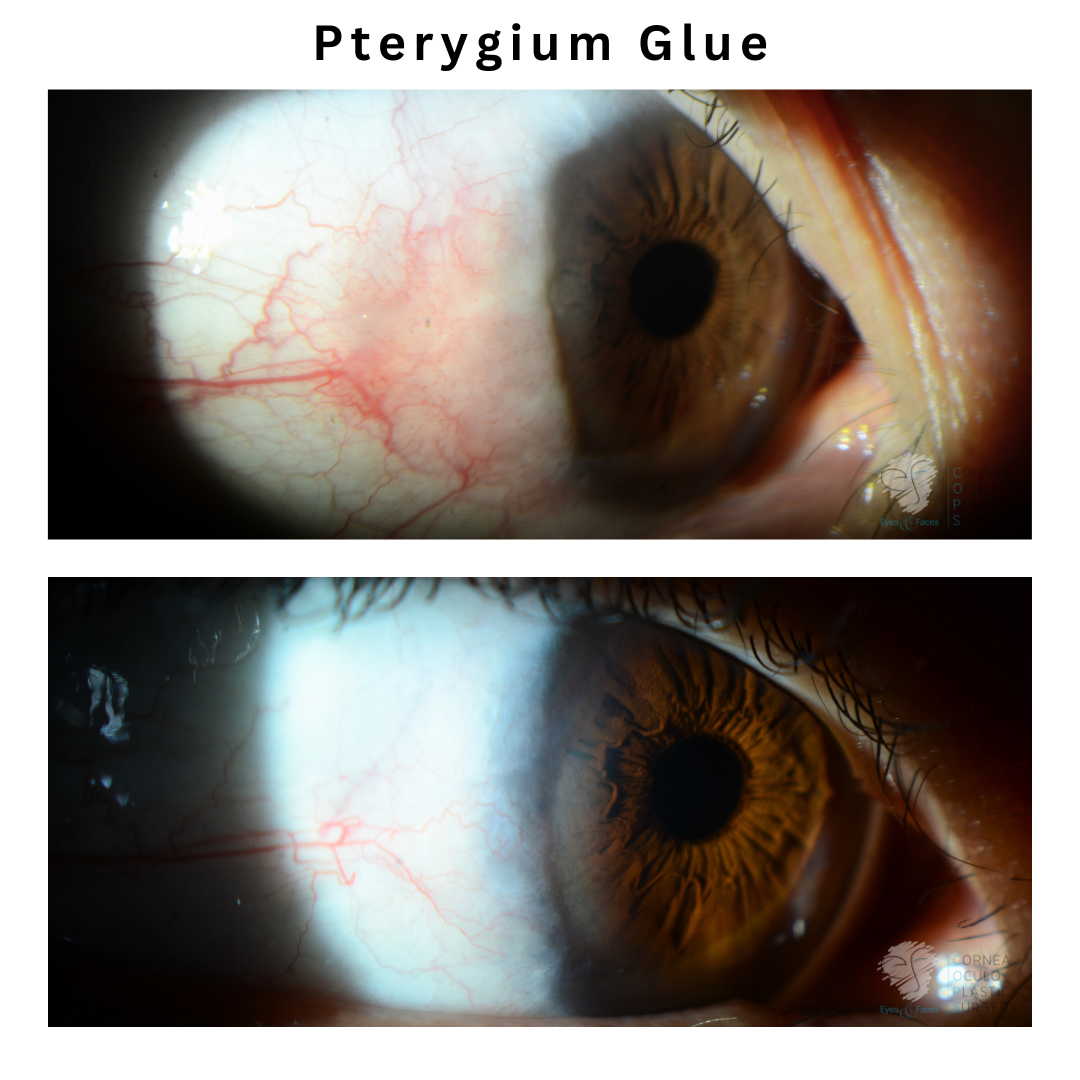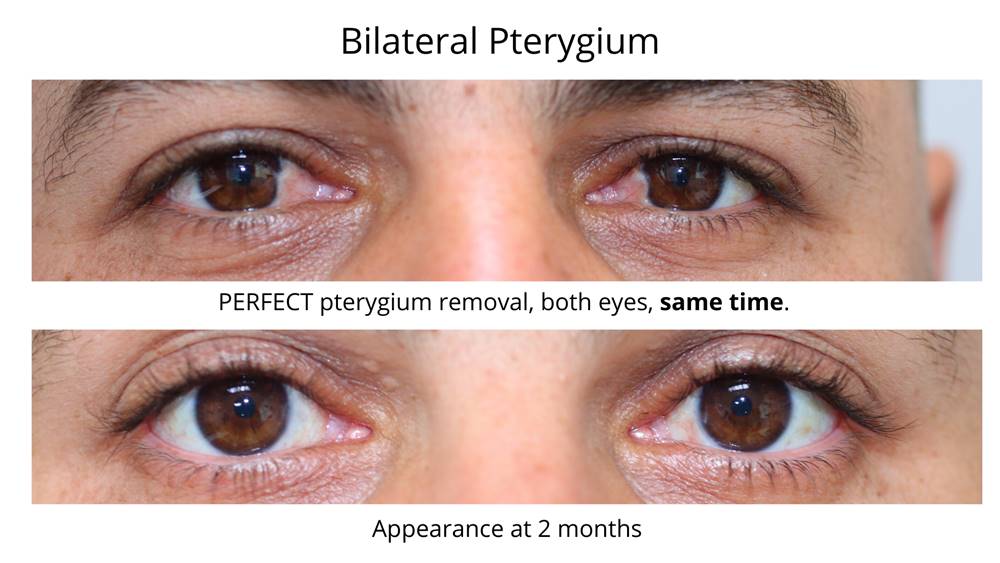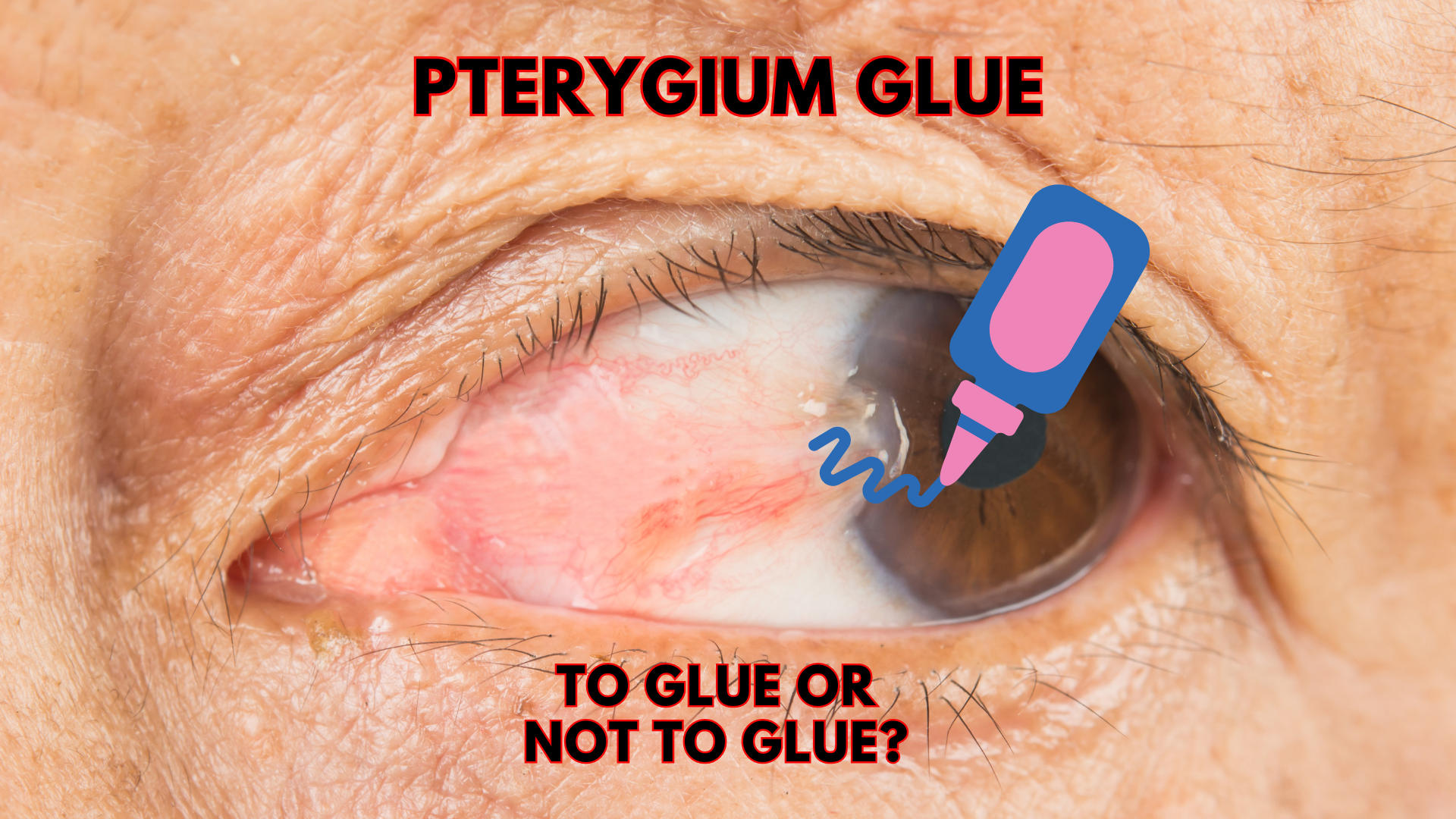Pterygium surgery has come a long way since I was a trainee, taught to use strontium 90. I did it once and thought, “this is terrible”.
A common issue in pterygium surgery is the question: to glue, or not to glue?
Bioglue speeds up the surgery by gluing a graft into place, instead of using multiple sutures to fix the same graft into place.
The upside is a quicker surgical procedure, but every upside brings downsides, and that is what this case is about.
This young lady presented with a mass over the site of gluing a temporal pterygium.
It LOOKS CANCEROUS, so the first step is to exclude sight any life-threatening conditions.
A biopsy revealed chronic inflammation, and the lesion settled completely with cyclosporin and steroids.

Note the second foto, the haze that is deposited in the temporal cornea following resolution …this is inflammatory, and will unlikely disappear.
The problem is that I cannot get the patient off low dose steroids without recurrence.
The patient is happy that the problem is “gone”, but I have not cured her.
She is 30 years old, and the trick now is to keep it quiet whilst not advancing cataract development or inducing glaucoma.
Analysing suboptimal outcomes makes us better at whatever we do. I don’t think this problem is common, but I don’t think it is recognized either.
.



